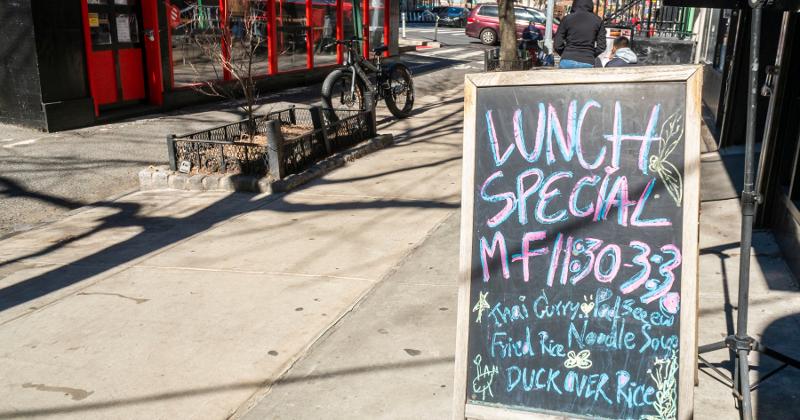
While the restaurant industry at large seems to have recovered from the pandemic, there’s one daypart that still has a ways to go: lunch.
According to new data from big tech supplier Toast, weekday lunch transactions in 19 of the country’s biggest metros remained down considerably in the first quarter compared to 2019, suggesting that remote work is continuing to impact consumers’ dining habits.
In Chicago and New York City, lunch traffic was negative 23% in Q1, while LA lunch visits lagged 2019 levels by 16%.
The only markets with positive lunch traffic were Kansas City (3%) and Charleston, S.C. (2%).
That makes sense when viewed alongside data from Kastle Systems, which shows office occupancy rates across 10 major cities remains at just about 50%.
Notably, the vast majority of lunch transactions (70%) are still happening on-premise. Twenty-seven percent are for takeout, up 7% since 2019, and just 3% are for delivery, up 2% vs. four years ago.
That suggests that many remote workers are not simply shifting their office lunch outings to delivery, and are instead opting to make their own lunch at home.
That said, when people do go out for lunch these days, they are spending significantly more.
Weekday lunch checks were up 46% in Q1 compared to 2019, from about $15.75 then to $23 now, per Toast. That includes a 49% increase in dine-in checks and a 42% rise in to-go totals.
Higher menu prices are certainly part of that. The increase could also reflect larger parties and bigger orders. The numbers do not include drinks, tax or tip.
Whatever the case may be, lunch is a lot more expensive than it was before the pandemic.
And it gets even pricier when you consider just how many Americans are ordering alcohol with their midday meal.
On average, alcohol makes up 16% of the American lunch bill. But in some areas of the country—specifically, Wisconsin, Colorado and Wyoming—it accounts for more than a quarter of the subtotal.
States where people are less likely to imbibe with their lunch are New York, New Jersey and Utah, where booze contributes an average of 9% to lunch spending.
Toast identified at least one area where consumers seem to be pulling back: tips at fast-food restaurants. QSR tipping rates were 16% in Q1 compared to 16.5% in 2019. FSR tips, on the other hand, remain slightly elevated at 19.7%.
Members help make our journalism possible. Become a Restaurant Business member today and unlock exclusive benefits, including unlimited access to all of our content. Sign up here.